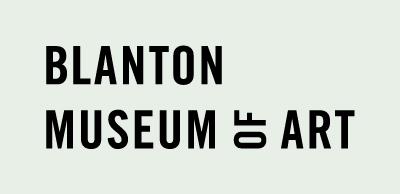Nadie se conoce [Nobody Knows Himself], plate 6 from Los Caprichos
Primary
Francisco de Goya y Lucientes
(Fuendetodos, Spain, 1746–Bordeaux, France, 1828)
NationalitySpanish, Europe
Date1797-1799 (p. 1890-1900)
MediumEtching and burnished aquatint
DimensionsSheet: 13 7/16 × 9 5/8 in. (34.1 × 24.5 cm)
Additional Dimension: 8 9/16 × 6 in. (21.7 × 15.2 cm)
Additional Dimension: 8 9/16 × 6 in. (21.7 × 15.2 cm)
Credit LineBlanton Museum of Art, The University of Texas at Austin, The Leo Steinberg Collection, 2002.1423
Keywords
Rights Statement
Collection AreaPrints and Drawings
Object number2002.1423
On View
Not on viewThe earliest of Goya’s four major print series by more than decade, the Caprichos were created in 1797-98. Free inventions, thus “caprices,” their eighty plates comment upon the tension betweensociety and the individual, between ideals and realities, between belief and reason. Injustice, hypocrisy, and superstition are Goya’s principal targets; caricature, satire, and sarcasm his favorite weapons. In addition to the printed titles, a manuscript in the Prado Museum purportedly written by Goya elucidates the meaning of individual prints. The imagery of the Caprichos is rich with references, from established iconography to folk literature, songs, and sayings. But the series is above all original in the modern sense: the product of an individual and unfettered imagination. The Caprichos are also the first great demonstration of the expressive possibilities of aquatint, which had previously been used for reproducing the appearance of drawings. First published in 1799 they along with the Tauromaquia were the only series released during the artist’s lifetime. Retaining the plates, the Royal Academy in Madrid issued eleven more editions between 1855 and 1937, making the Caprichos the most widely circulated and best known of Goya’s prints.
Revelers in costume celebrate Carnival. Whether hidden by mask, obscured by shadow, or averted, no face is clearly visible. Goya writes, “The world is a masquerade. Face, dress and voice, all are false. All wish to appear what they are not, all deceive and do not even know themselves.”
Francisco de Goya y Lucientes
1797-1799 (p. 1855)
Francisco de Goya y Lucientes
1797-1799 (p. 1799)
Francisco de Goya y Lucientes
1797-1799 (p. 1799)
Francisco de Goya y Lucientes
1797-1799 (p. 1799)
Francisco de Goya y Lucientes
1797-1799 (p. 1890-1900)
Francisco de Goya y Lucientes
1797-1799
Francisco de Goya y Lucientes
1797-1798 (p. 1868)
Francisco de Goya y Lucientes
1797-1799 (p. 1890-1900)
Francisco de Goya y Lucientes
1797-1799 (p. 1799)
Francisco de Goya y Lucientes
1797-1799 (p. 1890-1900)
Francisco de Goya y Lucientes
1797-1798 (p. 1868)

![Nadie se conoce [Nobody Knows Himself], plate 6 from Los Caprichos](/internal/media/dispatcher/16769/preview)

![Nadie se conoce [Nobody Knows Himself], plate 6 from Los Caprichos](/internal/media/dispatcher/16769/full)
![Quien lo creyera! [Who Would Have Thought It!], plate 62 from Los Caprichos](/internal/media/dispatcher/16766/thumbnail)
![Tragala Perro [Swallow It, Dog], plate 58 from Los Caprichos](/internal/media/dispatcher/16771/thumbnail)
![Linda maestra! [Pretty Teacher!], plate 68 from Los Caprichos](/internal/media/dispatcher/16779/thumbnail)
![Despacha, que dispiértan [Be Quick, They Are Waking Up], plate 78 from Los Caprichos](/internal/media/dispatcher/16780/thumbnail)

![Muchachos al avío [Lads Making Ready], plate 11 from Los Caprichos](/internal/media/dispatcher/29968/thumbnail)
![Las rinde el sueño [Sleep Overcomes Them], plate 34 from Los Caprichos](/internal/media/dispatcher/9059/thumbnail)
![Despacha, que dispiértan [Be Quick, They Are Waking Up], plate 78 from Los Caprichos](/internal/media/dispatcher/19759/thumbnail)
![Dios la perdone: y era su madre [For Heaven's Sake: And It Was Her Mother], plate 16 from Los Caprichos](/internal/media/dispatcher/16770/thumbnail)
![Donde vá mama? [Where is Mother Going?], plate 65 from Los Caprichos](/internal/media/dispatcher/15921/thumbnail)
![Devota profesion [Devout Profession], plate 70 from Los Caprichos](/internal/media/dispatcher/29967/thumbnail)
![Donde vá mama? [Where is Mother Going?], plate 65 from Los Caprichos](/internal/media/dispatcher/19748/thumbnail)